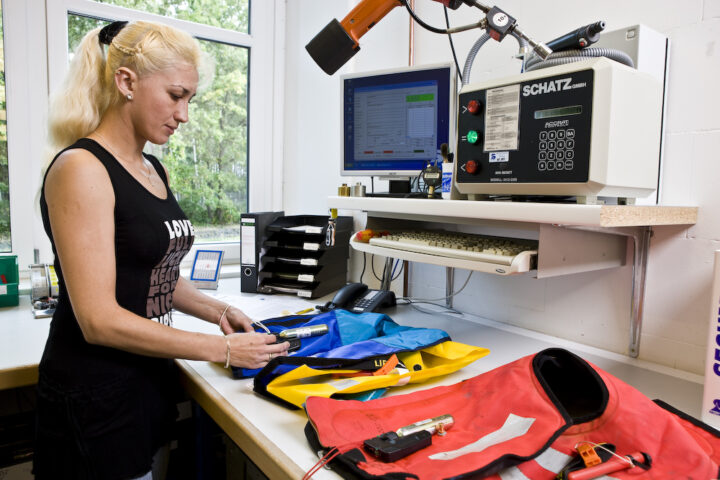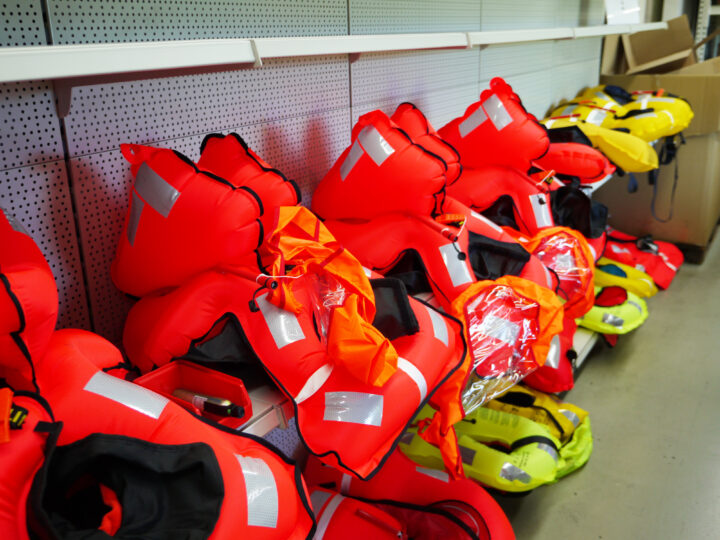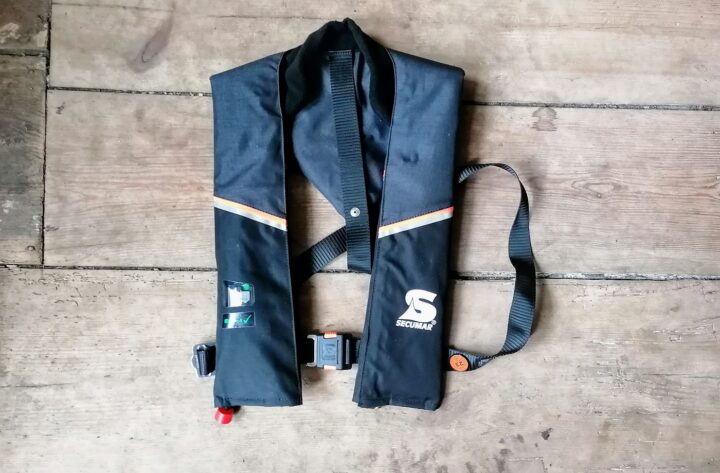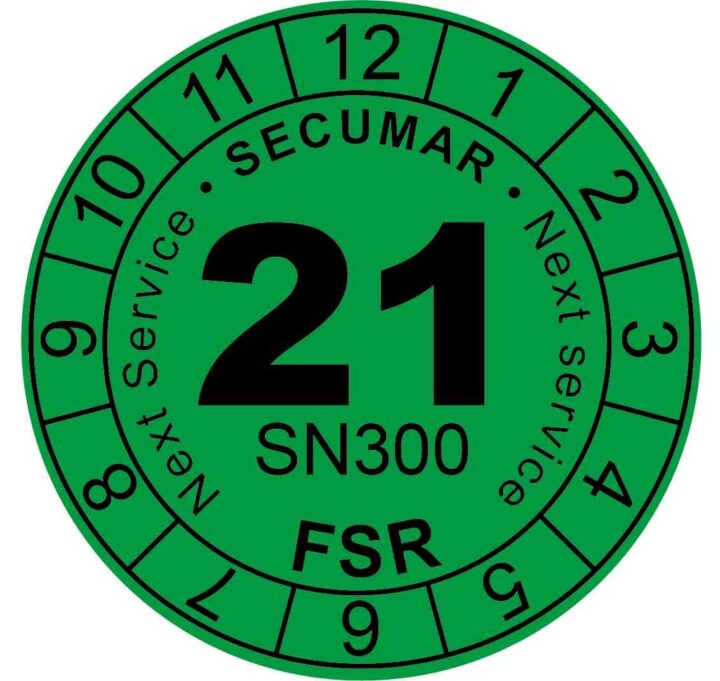Life jackets: what affects maintenance intervals.
Maintenance of life jackets
Automatic life jackets usually require basic maintenance and testing every two years. In most cases, the condition, tightness and function are checked, and the trigger tablet is replaced. In commercial use and international maritime shipping (SOLAS), these intervals are even mandatory every twelve months. Regular maintenance is not only for safety, but also to achieve the life time, which is limited to ten years according to the recommendation at the Professional Association of Sea Rescue Equipment (FSR) and all FSR members. The service life is also limited by legislation, which even requires manufacturers to give a definitive, limited indication of the service life with the EU regulation for personal protective equipment.
So much for the theory and regulations. In practice, this can all look quite different. In commercial and international maritime shipping, it is not uncommon for the vests used to be serviced at much shorter intervals. This is because, depending on the area of travel and use, they are sometimes subjected to much greater stress than average. Benjamin Bernhardt, Managing Director of the SECUMAR brand, confirms: “Some of our customers have a maintenance interval of six months and also prescribe further checks within this period. On the one hand, this risk assessment, known as a “hazard assessment” in BG jargon, is mandatory in order to ensure that employees are covered by insurance. On the other hand, it also limits liability for employers.”
What applies to commercial shipping should also be observed by the recreational skipper or pleasure boater. This is because maintenance intervals and service life ultimately depend on the load. For “normal” use, i.e. vacation cruising and the usual trips during the seasons, the two years is a reasonable period in most cases. For charterers or in cases of above-average use and also in certain areas, it is in some cases advisable to have the maintenance carried out at shorter intervals.
The maintenance intervals can certainly be compared with the TÜV inspection for motor vehicles: Although the technical condition is checked every two (or three) years, this does not mean that no defects can occur in the meantime. Ultimately, the condition of a vest is not determined by the maintenance intervals or the service life limit specified by the manufacturer, but by the intensity of use and the stress. And many factors play a role here. So you should not only pay attention to the often installed indicators that show the function of the release mechanism, but also regularly check the vests for traces of heavy use – and in case of doubt, give priority to maintenance and give the vest to an approved maintenance company.
What can affect the maintenance intervals and service life of a life jacket?
Mechanical load
 Life jacket maintenance © Secumar
Life jacket maintenance © Secumar Life jackets are subjected to different levels of stress through storage and use. Due to a lot of movement and friction (chafing), the vests can be exposed to strong mechanical stresses. The first indicator of above-average stress is usually the textile protective cover. If there are clear signs of chafing or even holes, this can be a sign that the interior may also be damaged. Protective covers serve precisely to protect the internal components of a lifejacket, such as the release mechanism or float, but they cannot keep out all mechanical stresses. In the case of visual wear points on the outer shell, the float should therefore also be subjected to a leakage test in any case. Today’s popular models have a mouth valve for this purpose, at which the float can be inflated and deflated. On this occasion, the release devices should also be checked.
Salt water, spray and sweat
Salt water, sea spray and also sweat contribute to material stress. The floats are not protected against water penetration by the protective covers, whether they are closed with a zipper or with Velcro. In any case, water will always get inside the vest. It is also not uncommon for sand to get into the inner area of vests, for example, when they are then deposited there after sailing from the anchorage to the beach. All these deposits, such as salt, dirt or sand, then act like sandpaper under mechanical load, especially on the kinks of the usually folded float, and this can lead to damage, i.e. leaks, in the long term. For this reason, almost without exception, all manufacturers advise cleaning the life jackets after contact with dirt or salt water – and not only on the outside, but also the inside should be cleaned with light soapy water or mild detergent and rinsed with clean water. In any case, the specifications of the respective manufacturer should be strictly observed.
 The usage also depends on the precinct ©Secumar
The usage also depends on the precinct ©Secumar UV radiation / sunlight
 Safe and inexpensive into the season: Take advantage of life jacket maintenance campaign
Safe and inexpensive into the season: Take advantage of life jacket maintenance campaign If there is one thing that hardly any plastic likes, it is sunlight or UV radiation. UV radiation contributes to the faster aging of plastics. Whether a lifejacket is exposed to high levels of solar radiation is usually indicated by visible color loss and fading. The brighter and more colorful a material is, the lower its UV resistance and the sooner it fades. Although all manufacturers use UV-resistant materials, even these fabrics age more quickly when exposed to high levels of UV radiation. But not only that: UV light, speaks sunlight, also contributes to a faster degradation of PU plastic. In the case of a protective cover, this can sometimes be seen in the fact that the inside of the protective cover, which is coated with PU, shows damage. The damage pattern resembles a sunburn on the skin, where the skin peels off. It should be noted that the tightness of the floats is also established via a PU coating. Thus, the tightness of the float inside the protective cover can also be affected by UV radiation. If color changes on the protective cover or even peeling of the PU coating on the inside of the protective cover are visible, then the tightness of the float should also be checked urgently, even if the next maintenance is not yet due according to the maintenance sticker.
Aging due to disuse
 Automatic life jacket: Check regularly
Automatic life jacket: Check regularly Everyone knows this for sure: You are looking for a rubber band, find it in a drawer and are surprised that it simply breaks at the slightest strain. PU plastics can also age when not in use, even if they are stored largely protected from environmental influences. Nevertheless, polyurethanes are fundamentally susceptible to degradation, i.e. material fatigue, and oxidation. Thus, the materials age even if they are not used at all. Therefore, vests that have been stored for an extended period of time should be thoroughly inspected from the outside as if new before use.
Conclusion and recommendation
Every now and then, many boaters take a look at the indicators on a life jacket or the maintenance tag to assess its condition. However, this is not sufficient to assess the reliability and condition of what is probably the most important means of sea rescue on board. This is because many external influences, including extreme temperature fluctuations and chemicals, can place above-average stress on the material.
Every climber subjects his equipment such as carabiners or ropes to a thorough inspection before every tour. Every skipper should do the same with life jackets. The crux of life jackets is that in the best case you never need them, because ideally you never go overboard. Whether they work, turns out then only in use, so in an emergency. That’s why you should always check and inspect them. SECUMAR boss Bernhardt recommends a short check before each use, before longer trips, which go beyond the usual weekend, or also night journeys, Bernhardt advises to a more thorough control: “In addition to a short check the life jacket should be submitted thereby absolutely to a 16-hour tightness test. This does not require inflation with a CO2 cartridge. It is sufficient to open the protective cover and inflate the buoyancy chamber via the mouth valve. Since the vests are nowadays made entirely of synthetic, inorganic materials, there is no need to worry about mold forming in the float due to moisture in the breathing air. This was only the case in the past when floats were made of rubber.” SECUMAR has not manufactured floats from rubber since the early 1990s.
Make your own risk assessment
Recreational skippers are well advised to keep it similar to commercial shipping and make their own risk assessment. For commercial skippers, even for berth charters, the employers’ liability insurance association even requires such a risk assessment. How to perform such a risk assessment can be found in the guideline of the German Social Accident Insurance (DGUV Regel 112-201). Some manufacturers also offer advice on this subject to private customers.



